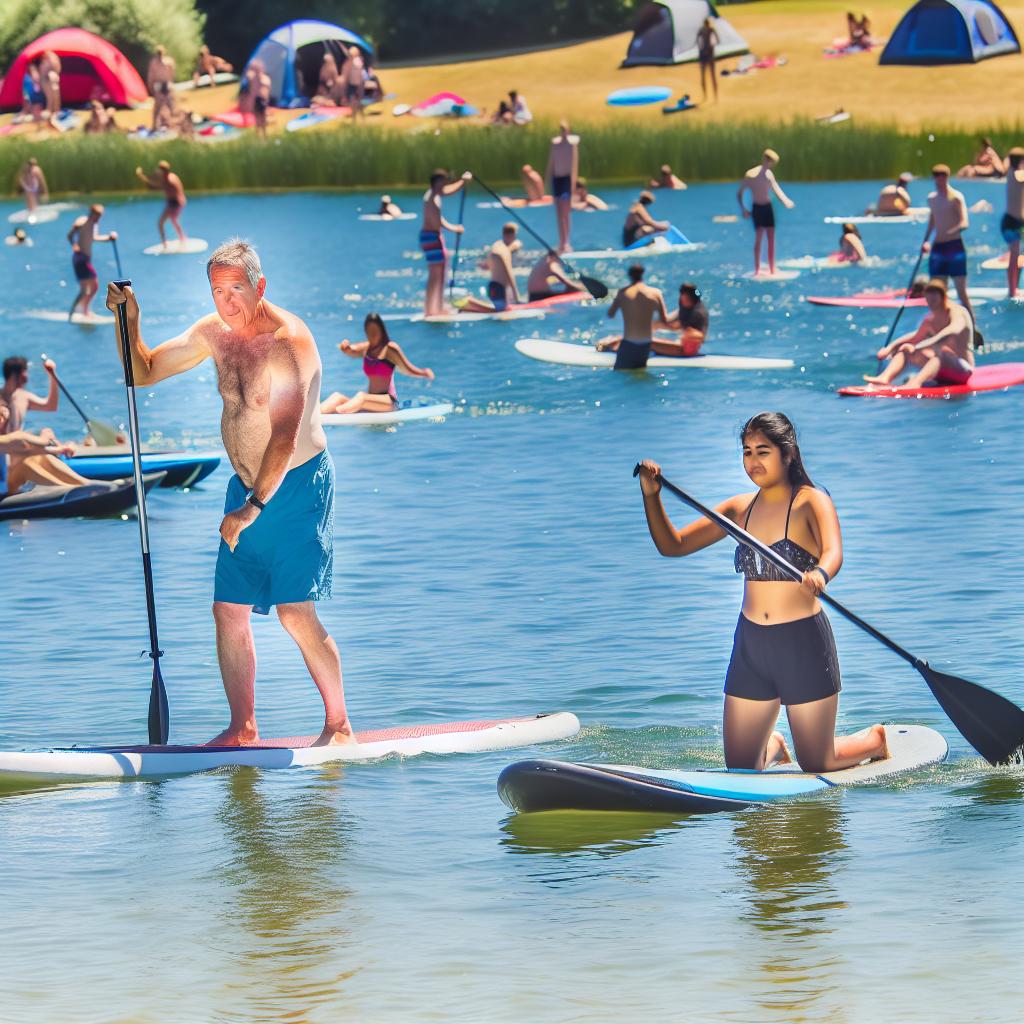Introduction to Watersports: Kayaking, Paddleboarding, and More
Watersports encompass a wide range of activities performed in or on water. Popular forms like kayaking and paddleboarding not only provide recreation but also offer various health benefits. Engaging in these activities allows participants to enjoy the serenity of water while enhancing their physical and mental well-being. This article delves into these popular watersports and others, highlighting their features, benefits, and providing essential tips for beginners.
Kayaking
Kayaking is an exhilarating watersport that involves using a small, narrow watercraft propelled by a double-bladed paddle. It is a versatile sport enjoyed on various bodies of water, such as oceans, rivers, lakes, and whitewater rapids, offering a range of experiences to suit different preferences.
Types of Kayaking
Kayaking can be experienced in several distinct forms, each offering unique adventures:
Recreational Kayaking: Designed primarily for calm water, recreational kayaking is ideal for those who enjoy leisurely paddling. It provides a perfect opportunity to observe nature quietly, making it a favorite for casual outings on serene lakes and slow-moving rivers.
Whitewater Kayaking: This form of kayaking takes place on fast-moving rivers and is suitable for adventure seekers. It requires a high level of skill and specialized equipment to navigate the rapids safely, offering an adrenaline-pumping experience for thrill enthusiasts.
Sea Kayaking: Intended for ocean travel, sea kayaking is designed to handle open water conditions and cover long distances. It is perfect for exploring coastlines and offshore islands, and paddlers often encounter marine life, adding an element of excitement to the journey.
Benefits of Kayaking
Engaging in kayaking is beneficial for both physical and mental health. Physically, it offers an excellent workout that improves cardiovascular fitness, strengthens muscles, and enhances flexibility. The rhythmic paddling motion helps tone the arms, shoulders, and back while also engaging the core. Mentally, kayaking promotes well-being by allowing enthusiasts to connect with nature, offering a sense of tranquility and calmness. Paddling on water provides an escape from daily stressors, making it a suitable activity for stress relief and mental clarity.
Paddleboarding
Paddleboarding is another popular watersport where participants stand on a board similar to a surfboard and use a paddle to propel themselves across the water. It combines elements of surfing and kayaking, creating a unique aquatic experience that appeals to many.
Types of Paddleboarding
Several styles of paddleboarding cater to different tastes and environments:
Stand-Up Paddleboarding (SUP): The most common form, SUP, is highly versatile and can be performed on lakes, rivers, and oceans. It is accessible to all skill levels, making it a popular choice for those looking for a new way to enjoy the water.
Paddleboard Yoga: This innovative form combines stand-up paddleboarding with yoga. It enhances balance and focus as participants perform yoga poses on the water, providing a peaceful and challenging workout.
Surf Paddleboarding: In this variant, participants ride waves on a paddleboard. Surf paddleboarding requires surf-specific skills and equipment. It’s perfect for those who enjoy the thrill of wave riding but want to add something different to their surf experience.
Benefits of Paddleboarding
Paddleboarding provides a comprehensive full-body workout, improving core strength due to the challenge of maintaining balance on the water. It also helps in enhancing endurance and is a great way to build muscle strength, from the arms and shoulders to the legs and core. Moreover, paddleboarding is low-impact, making it an accessible sport for individuals of all ages, including those looking for gentle yet effective exercise. Beyond the physical benefits, paddleboarding offers psychological advantages. Paddling through tranquil waters allows participants to enjoy the serenity and calmness associated with water settings, contributing to stress reduction and increased mental relaxation.
Additional Watersports
Beyond the popular kayaking and paddleboarding, several other watersports offer diverse and exciting ways to explore aquatic environments:
Windsurfing: Combining elements of surfing and sailing, windsurfing utilizes a board mounted with a sail. The rider directs the sail to catch the wind, gliding across the water. It’s a dynamic sport that requires skill in balancing and controlling the sail.
Kitesurfing: Kitesurfing involves using a large kite to harness the wind’s power, propelling the rider across the water on a board. This extreme sport blends aspects of surfing, paragliding, and sailing, offering thrilling experiences for adventure enthusiasts.
These watersports require specific skills and gear to ensure safe practice and maximized enjoyment. Like kayaking and paddleboarding, windsurfing and kitesurfing provide robust physical exercise and an excellent opportunity to connect with nature.
Getting Started in Watersports
For those new to watersports, the initial step might seem daunting. However, starting your journey on the water can be smooth with a bit of preparation and guidance. Here are practical tips to help you ease into enjoying watersports:
Learn from Experts: Consider enrolling in lessons or workshops with certified instructors. Professional guidance can ensure safe and effective learning, helping you grasp the basics and gradually advance your skills.
Use Proper Equipment: Investing in quality equipment is crucial for a positive experience. Ensure the gear you purchase is tailored to your chosen watersport, whether it’s a kayak, paddleboard, or another form. Proper fitting equipment is essential for safety and comfort while on the water.
Understand Water Conditions: Before venturing out, familiarize yourself with the local water conditions and check weather forecasts. Understanding potential challenges or hazards in the area will help you stay safe and make the most out of your water adventure.
Conclusion
Watersports such as kayaking and paddleboarding offer enriching experiences that enhance physical fitness and contribute to mental well-being. Embracing these activities requires understanding the basics of each sport and adhering to safety practices for a secure and enjoyable experience. As you explore these activities, you will find them rewarding and an excellent addition to your regular exercise or recreational routine. For further exploration into the world of watersports, reputable resources like the American Canoe Association or SUP Magazine offer detailed information, guidance, and support to help enthusiasts dive deeper into their chosen pursuits.
